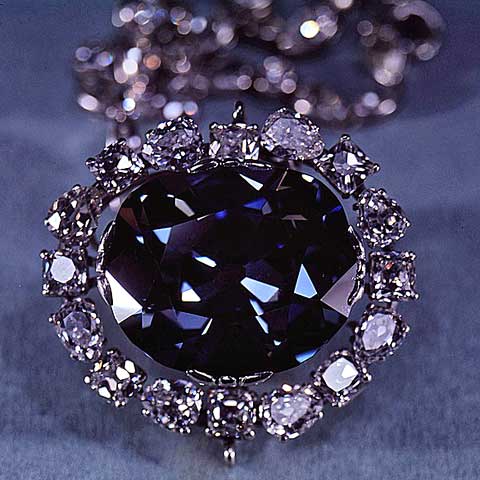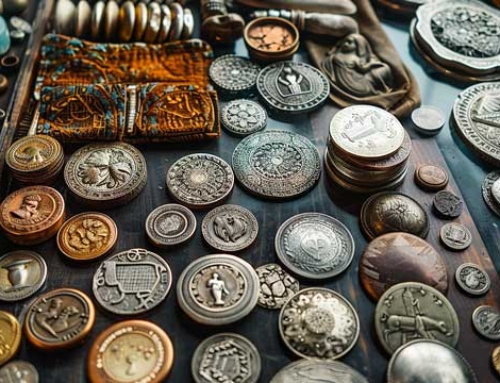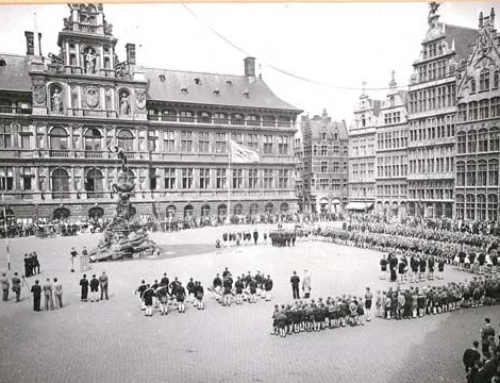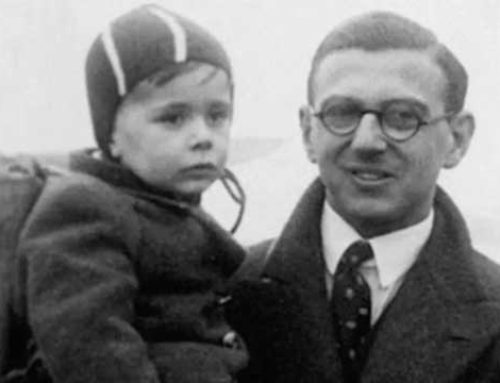The Hope Diamond was the stuff of fantasy for the richest of people, before its cursed nature tarnished its reputation. But what is its history?
Despite it’s positive name it is for its cursed nature that it is known. The Hope, named after the family that owned it from 1824 onwards, is a 45.52 carat stone recut from the Bleu de France, a crown diamond stolen in 1792. Some of its successive owners are said to have met a troubled, even tragic end, shaping the legend of this gem. More than three centuries after its discovery, it is now a part of the National Museum of Natural History in Washington, DC, USA. The Hope Diamond is one of the most widely viewed works of art.
Discovered in India in the 17th century, the diamond weighed 115 carats, a rare heavy weight in the world of gemology. Legend has it that the stone was stolen from a statue of the goddess Sitâ, before being brought back to France by the traveller Jean-Baptiste Tavernier, who sold it to Louis XIV. In order to make it a symbol worthy of the Sun King, the sovereign ordered that the diamond be cut, reducing its weight to 69 carats while restoring its brilliance.
Lord Henry Philip Hope, first official owner
Forty years later, in the wake of the Revolution, King Louis XVI and Marie Antoinette were arrested while attempting to flee the country. With the monarchs imprisoned, the fate of France’s crown jewels fell into the hands of the fledgling government. Not for long. In mid-September 1792, as a wave of riots swept through the capital, the Hôtel du Garde-Meuble was targeted by thieves who took most of the Crown Jewels. Between 11 and 16 September 1792, the diamond disappeared, only to be found twenty years later.
In 1812, a blue diamond smaller than the famous French jewel reached a London dealer named Daniel Eliason. How did he get hold of it? The mystery remains complete. What is known is that the stone was shown to jeweller Jean Francillon, who described the 45.52 carat diamond as “deep blue“, “without blemish or defect“. The first official owner was London banker Lord Henry Philip Hope, who bought the stone in 1830 and named it after himself. His son, Henry Francis Hope Pelham-Clinton inherited it in 1887. Ruined, he decided to sell it.
The Hope Diamond, briefly owned by Pierre Cartier
Afterwards, it was the turn of the new owner, the American broker Frankel, to go bankrupt. He had to sell it to Solomon Habib for the modest sum of 400,000 dollars in 1908. The diamond reached the jeweller Pierre Cartier, grandson of Louis-François. Fearing that his reputation would hinder the sale, Pierre Cartier hoped to sell it quickly. He was right on target: the billionaire Evalyn Walsh McLean, a young heiress and wife of a descendant of the family that owned the Washington Post, became enamored of the precious stone. Among the clauses of the sale, Cartier undertook to take back the jewel if something unfortunate happened, according to Vanity Fair magazine. Despite the precautions taken by the owner, curses rained down: in 1919, her 9-year-old son was hit by a car, her husband became an alcoholic and her 25-year-old daughter died of an overdose. The heiress ended her life in a psychiatric hospital and passed away at the age of 60 in 1947.
The Hope, a diamond from the Bleu de France?
Beyond the legend woven around the diamond, another question remains: did the Hope come from the Bleu de France stolen in 1792? Until December 2007, the question remained open as to whether the Hope came from the Bleu de France. François Farges, professor of mineralogy at the Muséum national d’Histoire naturelle in Paris, discovered the lead cast of Louis XIV’s blue diamond and documents, including a description of the “lead model of a diamond remarkable for its clarity“. The Crown diamond and the Hope are one and the same stone.







